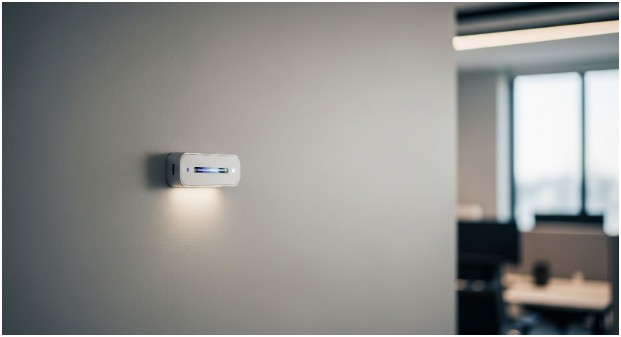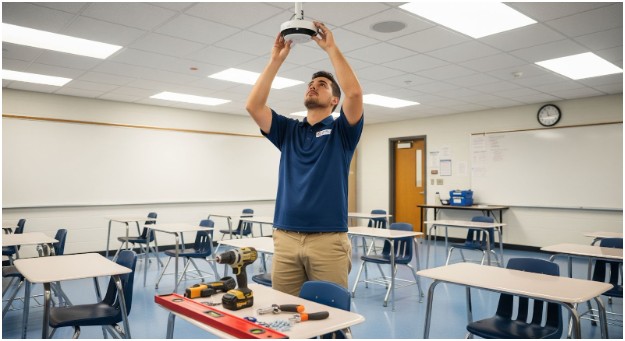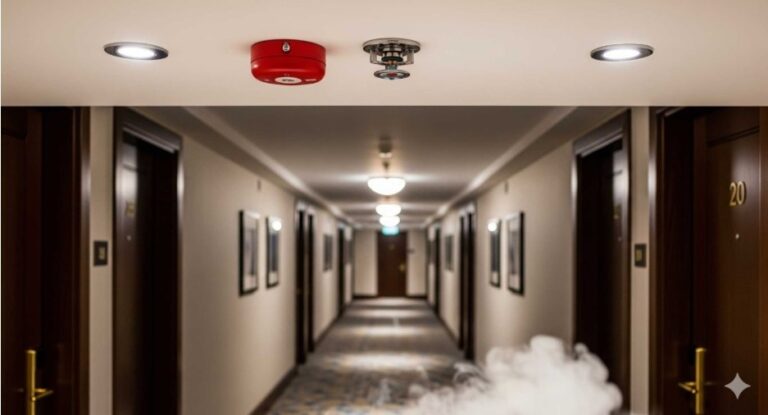I remember the first time I saw a vape detector. It was in a public restroom in a mall, and I thought, “Is that a smoke detector?”
But as I stared at the device, I noticed something different about it. It was sleeker, more discreet, and somehow felt more high-tech.
I had heard of them, of course, but seeing one in action sparked a wave of curiosity. I immediately started thinking: What do vape detectors actually look like?
Here’s the thing: vape detectors aren’t like your typical smoke detectors. These little gadgets are designed to sniff out vapor, specifically from e-cigarettes or vapes, and they do so with surprising precision.
Whether you’re in an office building, a school, or even public transport, these devices are becoming a silent but effective tool in the fight against vaping in restricted areas.
In this guide, I’m going to take you behind the scenes of vape detectors, explore their designs, and explain why these devices are becoming so essential in today’s spaces.
What Are Vape Detectors and Why Do We Need Them?

To start, let’s define what a vape detector is and why it’s suddenly a must-have in many public and private spaces. Simply put, a vape detector is a device that detects the presence of vapor in the air.
Much like smoke detectors sense smoke particles, vape detectors are designed to pick up the tiny particles produced by e-cigarettes or vape pens.
Why do we need them? Well, as vaping has become more widespread, so has the need for policies and technologies to keep certain spaces, like schools and offices, vape-free.
Vape detectors help enforce these rules, alerting building management or security when vaping occurs in restricted areas. They’re also a way to maintain air quality and health standards in places where smoking is prohibited.
What Do Vape Detectors Look Like?

Now, let’s talk about the visual side of things. If you’ve seen a traditional smoke detector, you’re already familiar with the basic shape. Vape detectors, however, come in a few different forms, but they all share one thing in common: they’re designed to be discreet yet effective.
Are Vape Detectors Similar to Smoke Detectors?
Yes, and no. While vape detectors do resemble smoke detectors in some ways, they tend to be slightly more modern or sleek in design. Traditional smoke detectors are often large, bulky, and typically white.
Vape detectors, on the other hand, are often smaller, more compact, and feature smoother finishes. Many have a clean, round shape with a minimalistic look, blending seamlessly into the ceiling or wall.
Some vape detectors are designed to be mounted on walls or ceilings, and they often look like small white discs, about the size of a smoke detector but with fewer visible components.
They tend to have a matte finish and can blend into the environment, making them unobtrusive in spaces like offices or classrooms.
Do They Have Visible Sensors or Lights?
Most vape detectors have sensors built into them that detect the particles in the air, but these sensors are often not visible. Instead, they may have small, discreet holes or grilles to allow air flow into the sensor.
The most notable feature on many vape detectors is the indicator light or notification system that lets users know when vaping is detected.
Some models have small LED lights that change color when vaping is detected. For example, a green light may indicate everything is clear, while a red light signals that vapor has been detected.
These subtle visual cues help management and security teams monitor the situation without needing to directly interact with the device.
In more advanced models, the vape detector might be linked to an alert system that sends notifications to a central monitoring system, which can then alert security or building management about the incident.
How Do Vape Detectors Actually Detect Vapor?

You might be wondering how these devices can even detect something as invisible as vapor. It’s all about technology. Vape detectors are equipped with sophisticated sensors that can detect the small particles in vape clouds.
Are They Using Particle Detection?
Yes, vape detectors rely on particle detection. When someone exhales vapor, it releases tiny particles suspended in the air. These particles are usually larger than the air molecules around them, and they scatter light in a way that makes them detectable.
Vape detectors use sensors that emit light beams into the air, and when the vapor particles pass through, they scatter the light. The sensor detects this scattering and alerts the system.Some vape detectors also use infrared light or laser-based technology to enhance their ability to detect vapor.
These methods are particularly effective at distinguishing vapor from other airborne particles, ensuring that the device only triggers when it detects vapor from a vape pen or e-cigarette.
Can Vape Detectors Pick Up Both Nicotine and Non-Nicotine Vapor?
Yes, vape detectors are designed to pick up both nicotine and non-nicotine vapor. The key here is the particles in the vapor, not necessarily the nicotine.
So whether someone is vaping with nicotine or using a nicotine-free vape, the particles still have a specific composition that the detector can identify.
This is why vape detectors are so effective—they can detect all types of e-cigarette vapor, regardless of the ingredients. This makes them a useful tool in ensuring that vape-free zones stay intact, even if someone is using a vape without nicotine.
How to Make the Most of Vape Detectors

If you’re in charge of a building or public space where vaping is prohibited, here’s how to make the most of your vape detectors:
1. Position Them Strategically
For vape detectors to be most effective, they need to be placed in areas where vaping is likely to occur. Common areas to install them include bathrooms, hallways, and common spaces. Ideally, place them in high-traffic areas where people gather and might feel tempted to vape.
2. Ensure Proper Maintenance
Like any piece of technology, vape detectors require regular maintenance. Clean the sensors periodically to avoid dust buildup, which can affect their accuracy. Also, ensure the devices are functioning properly and test them regularly to confirm they’re working as expected.
3. Educate and Communicate
Make sure everyone in the building or public space knows about the vape detectors and the vaping policy. Clear signage and communication about the use of these detectors can help deter people from vaping in prohibited areas, knowing that there’s a system in place to catch them.
FAQ: Everything You Need to Know About Vape Detectors
1. How accurate are vape detectors?
Vape detectors are generally quite accurate, but their effectiveness can depend on factors like airflow, the amount of vapor, and environmental conditions. The most advanced models are extremely reliable, but even the simpler ones can provide useful alerts.
2. Can vape detectors detect smoke?
No, vape detectors are specifically designed to detect vapor from e-cigarettes and vapes. Smoke detectors are better equipped to pick up smoke from burning substances like tobacco or fire, which are larger and denser particles than those found in vapor.
3. Are vape detectors expensive?
The price of vape detectors can vary, with basic models starting at around $50, while more advanced systems that send real-time alerts or integrate into building management systems can cost several hundred dollars. It’s important to balance cost with functionality to ensure you’re getting the right detector for your needs.
4. Do vape detectors only work in indoor spaces?
Yes, vape detectors are typically designed for indoor spaces. Outdoor conditions like wind and open air can interfere with their ability to detect vapor accurately, so they are best used in enclosed environments like offices, schools, and other indoor spaces.
The Future of Vape-Free Spaces
Vape detectors are more than just the latest tech trend—they’re becoming essential in maintaining clean, vape-free environments. Whether you’re managing a school, an office, or any public space, these devices offer a reliable way to enforce vaping bans without creating a stifling atmosphere.
With their discreet, sleek designs and high-tech sensors, vape detectors are helping to ensure that spaces remain free from harmful vaping—without interrupting the flow of the environment.









